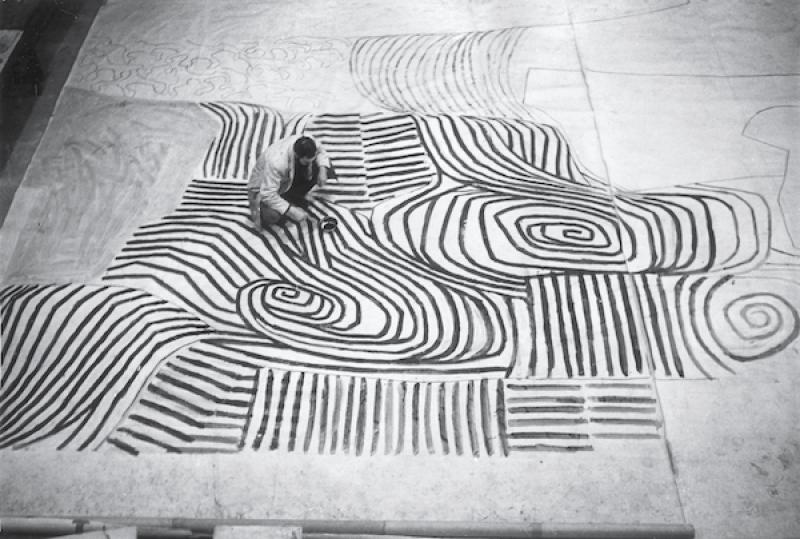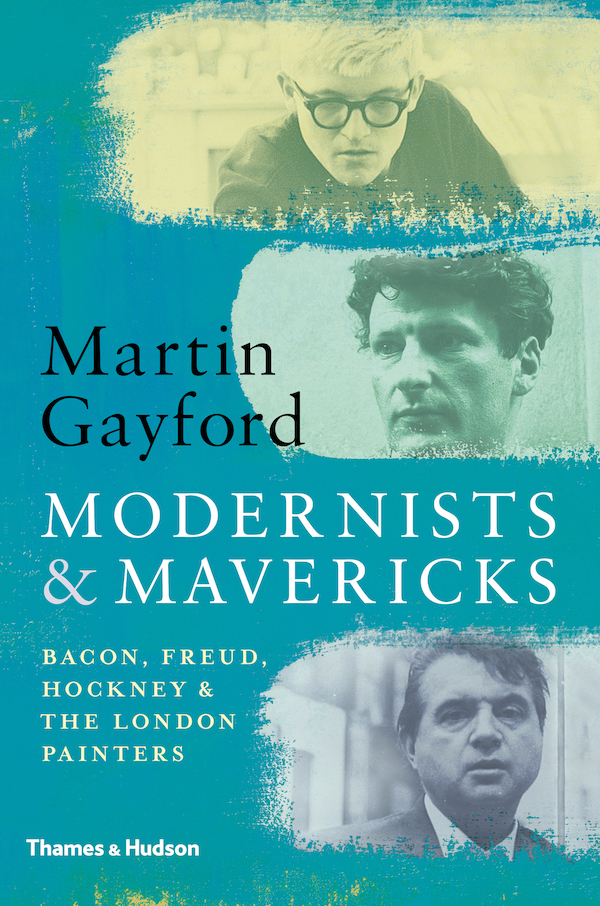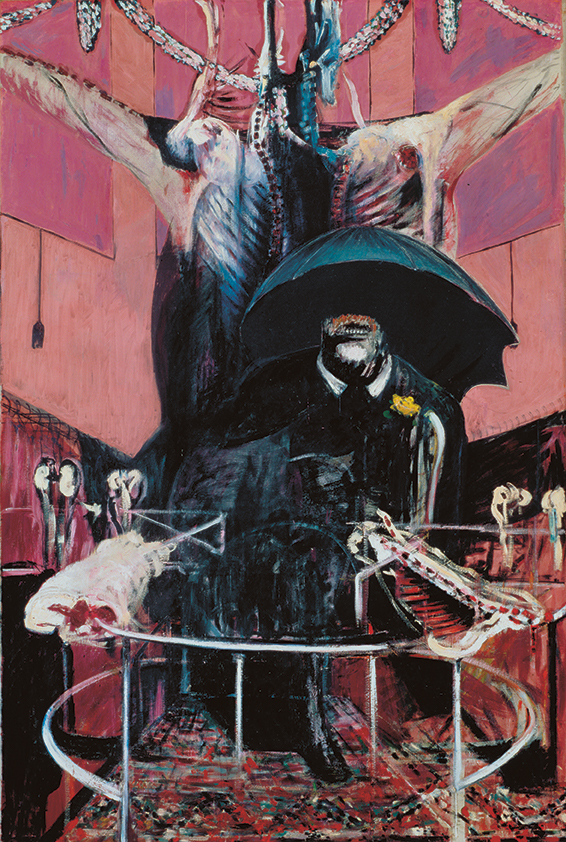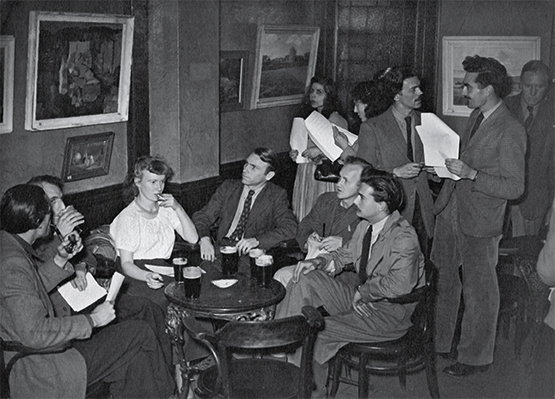Martin Gayford: Modernists & Mavericks review - people, places and paint | reviews, news & interviews
Martin Gayford: Modernists & Mavericks review - people, places and paint
Martin Gayford: Modernists & Mavericks review - people, places and paint
Utterly human account of the painters of London over the 30 years since 1945

Back in the early Sixties Lucian Freud was living in Clarendon Crescent, a condemned row of houses in Paddington which were gradually being demolished around him. The neighbourhood was uncompromisingly working class and to his glee his neighbours included characters from the seamier side of the criminal world.
 This recollection (via Frank Auerbach) of bloodyminded auto-didacticism is a recurring of theme in Martin Gayford’s new book, Modernists & Mavericks — which is as much a meditation on the fickleness of fame and favour as it is a survey of the painters working in London during the quarter century between 1945 and 1970. It is also a portrait of the city as it mutated out of the debris of war and formed something akin to the shape that can still be loosely discerned in its current lineaments. What characterises the massively divergent artistic approaches the loose grouping of London painters pursued during the post-war years was, according to Gayford, a kind of renegade flair and awareness of the fact of the city, whether found in its industrial accoutrements, social loci or simply in a particular kind of light.
This recollection (via Frank Auerbach) of bloodyminded auto-didacticism is a recurring of theme in Martin Gayford’s new book, Modernists & Mavericks — which is as much a meditation on the fickleness of fame and favour as it is a survey of the painters working in London during the quarter century between 1945 and 1970. It is also a portrait of the city as it mutated out of the debris of war and formed something akin to the shape that can still be loosely discerned in its current lineaments. What characterises the massively divergent artistic approaches the loose grouping of London painters pursued during the post-war years was, according to Gayford, a kind of renegade flair and awareness of the fact of the city, whether found in its industrial accoutrements, social loci or simply in a particular kind of light.
Time and again Gayford draws attention to the way specific places fatefully informed artists’ work: the Willesden Green public pool leading to Leon Kossoff’s exuberant, miasmic, ovidian pool paintings (one is currently on display at the Tate Britain’s excellent if expensive All Too Human exhibition), the canals of Peckham which were the setting for a conversation between William Coldstream, Victor Passmore and William Townsend into the distinction between painters interested in the world outside of themselves and those painting from the inside, and Prunella Clough’s excursions to depict the industrial fringes of the city in Woolwich, Canning Town and Acton East.
He also takes us inside painters’ houses and studios. Aside from intriguing contrasts drawn between the hectic unruly disorder of Bacon’s studio and the furiously mathematical contraptions to which Euan Uglow subjected himself and his models, two charming photographs stand out: an aquiline Freud in striped jumper caressing a stuffed zebra head, and Frank Bowling leaning on a fire mantel above which geometric diagrams painted direct onto the wall lay out with Euclidian severity his theories of art.
 Gayford’s material is drawn largely from conversations with many of the artists involved over the years, not least Gillian Ayres who died earlier this April, and this lends the book an intimate tone as it traces the gestation of new ways of seeing, looking and painting through time and through the artists who conceived them. Innovation and new means of painterly expression therefore take of a convivial air and the book is a joyful, human read for it.
Gayford’s material is drawn largely from conversations with many of the artists involved over the years, not least Gillian Ayres who died earlier this April, and this lends the book an intimate tone as it traces the gestation of new ways of seeing, looking and painting through time and through the artists who conceived them. Innovation and new means of painterly expression therefore take of a convivial air and the book is a joyful, human read for it.
This approach brings forth without affectation the deep impact significant personal events could have upon individual painters without succumbing to a tedious kind of biography. So the role that Soho played in the personal and painterly lives of Bacon, Freud, Robert Colquhoun, Robert MacBryde and John Craxton figures early, and the tectonic movements that shifted the locus of artistic excitement from Europe to America and that put British artists in contact with contemporaries across the Atlantic are therefore told through the gravitations of David Hockney and Richard Smith towards Los Angeles and New York. It also allows the book to do something that galleries often don’t, can’t, or omit to do — namely allow the history of friendships and competitions to soften overly sharp distinctions between schools of artistic thought. It is fair to say that during those twenty five years the Euston Road, Camden Town, and Borough groups set young artists off along distinct paths, but as many chafed under their tutors as were inspired by them and what is distinctive is how many ended up forging their own ways and how influences and friendships cut across styles and approaches.
It also allows the book to do something that galleries often don’t, can’t, or omit to do — namely allow the history of friendships and competitions to soften overly sharp distinctions between schools of artistic thought. It is fair to say that during those twenty five years the Euston Road, Camden Town, and Borough groups set young artists off along distinct paths, but as many chafed under their tutors as were inspired by them and what is distinctive is how many ended up forging their own ways and how influences and friendships cut across styles and approaches.
A great deal has changed since 1945 and even the London of the 1970s feels far off. Some of the artists in Gayford’s book are still practising and exhibiting — notably Bridget Riley and David Hockney. But they are living icons and the artistic establishment surrounding these artists who were once young and unknown is now setting the public agenda. While they rightfully take their place in the gallery of greats, what Gayford’s book eloquently traces is that while new art incubated in London might be informed by work that came immediately before, the direction of the new artists’ reaction will never be predictable.
- Modernists & Mavericks by Martin Gayford (Thames & Hudson, £24.95 hardback)
- Read more book reviews on theartsdesk
rating
Explore topics
Share this article
The future of Arts Journalism
You can stop theartsdesk.com closing!
We urgently need financing to survive. Our fundraising drive has thus far raised £49,000 but we need to reach £100,000 or we will be forced to close. Please contribute here: https://gofund.me/c3f6033d
And if you can forward this information to anyone who might assist, we’d be grateful.

Subscribe to theartsdesk.com
Thank you for continuing to read our work on theartsdesk.com. For unlimited access to every article in its entirety, including our archive of more than 15,000 pieces, we're asking for £5 per month or £40 per year. We feel it's a very good deal, and hope you do too.
To take a subscription now simply click here.
And if you're looking for that extra gift for a friend or family member, why not treat them to a theartsdesk.com gift subscription?
more Books
 'We are bowled over!' Thank you for your messages of love and support
Much-appreciated words of commendation from readers and the cultural community
'We are bowled over!' Thank you for your messages of love and support
Much-appreciated words of commendation from readers and the cultural community
 Elizabeth Alker: Everything We Do is Music review - Prokofiev goes pop
A compelling journey into a surprising musical kinship
Elizabeth Alker: Everything We Do is Music review - Prokofiev goes pop
A compelling journey into a surprising musical kinship
 Natalia Ginzburg: The City and the House review - a dying art
Dick Davis renders this analogue love-letter in polyphonic English
Natalia Ginzburg: The City and the House review - a dying art
Dick Davis renders this analogue love-letter in polyphonic English
 Tom Raworth: Cancer review - truthfulness
A 'lost' book reconfirms Raworth’s legacy as one of the great lyric poets
Tom Raworth: Cancer review - truthfulness
A 'lost' book reconfirms Raworth’s legacy as one of the great lyric poets
 Ian Leslie: John and Paul - A Love Story in Songs review - help!
Ian Leslie loses himself in amateur psychology, and fatally misreads The Beatles
Ian Leslie: John and Paul - A Love Story in Songs review - help!
Ian Leslie loses himself in amateur psychology, and fatally misreads The Beatles
 Samuel Arbesman: The Magic of Code review - the spark ages
A wide-eyed take on our digital world can’t quite dispel the dangers
Samuel Arbesman: The Magic of Code review - the spark ages
A wide-eyed take on our digital world can’t quite dispel the dangers
 Zsuzsanna Gahse: Mountainish review - seeking refuge
Notes on danger and dialogue in the shadow of the Swiss Alps
Zsuzsanna Gahse: Mountainish review - seeking refuge
Notes on danger and dialogue in the shadow of the Swiss Alps
 Patrick McGilligan: Woody Allen - A Travesty of a Mockery of a Sham review - New York stories
Fair-minded Woody Allen biography covers all bases
Patrick McGilligan: Woody Allen - A Travesty of a Mockery of a Sham review - New York stories
Fair-minded Woody Allen biography covers all bases
 Howard Amos: Russia Starts Here review - East meets West, via the Pskov region
A journalist looks beyond borders in this searching account of the Russian mind
Howard Amos: Russia Starts Here review - East meets West, via the Pskov region
A journalist looks beyond borders in this searching account of the Russian mind
 Henry Gee: The Decline and Fall of the Human Empire - Why Our Species is on the Edge of Extinction review - survival instincts
A science writer looks to the stars for a way to dodge our impending doom
Henry Gee: The Decline and Fall of the Human Empire - Why Our Species is on the Edge of Extinction review - survival instincts
A science writer looks to the stars for a way to dodge our impending doom
 Jonathan Buckley: One Boat review - a shore thing
Buckley’s 13th novel is a powerful reflection on intimacy and grief
Jonathan Buckley: One Boat review - a shore thing
Buckley’s 13th novel is a powerful reflection on intimacy and grief
 Help to give theartsdesk a future!
Support our GoFundMe appeal
Help to give theartsdesk a future!
Support our GoFundMe appeal

Add comment